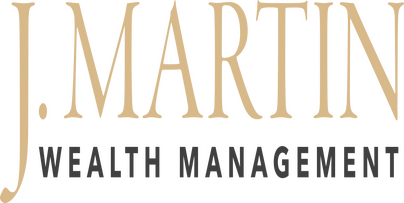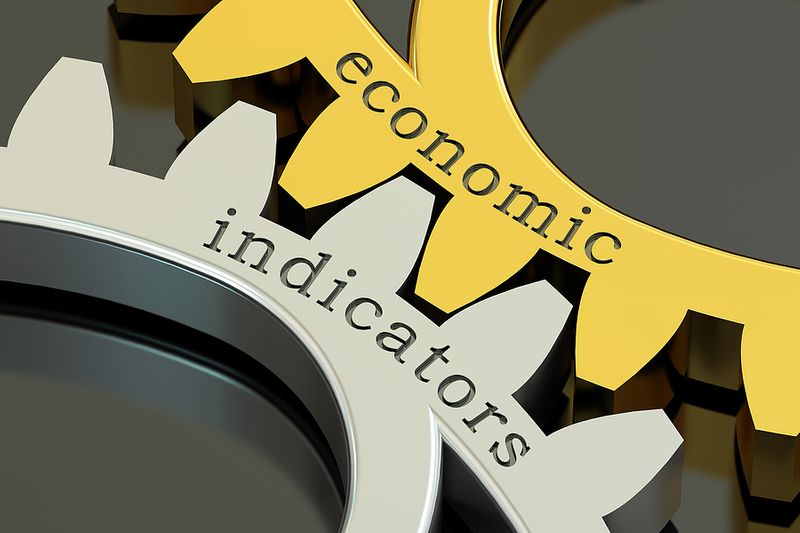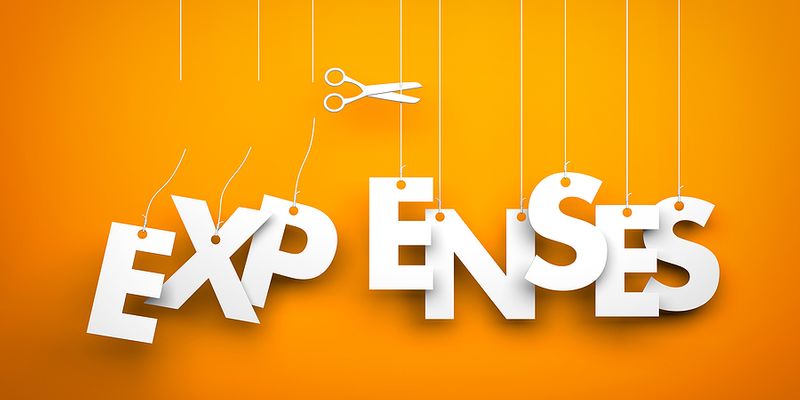Blog
Keep up to date with our news, tips & tricks, and latest information!
Understanding the Impacts of the U.S. Government Shutdown
Jeff Martin, CRPC®
The U.S. Government Shutdown is a complex scenario in which Congress and the President disagreed on a plan to fund government operations and agencies and failed to reach a budget agreement. Common areas of dispute included:
· Defense spending
· Healthcare
· Immigration
· Environmental regulations
· Education
Past shutdowns have occurred when negotiations failed regarding the national debt limit, resulting in a breach of the debt ceiling. Additionally, major policy issues have continued to play a critical role in budget disputes. For instance, delayed budget approval regarding the Affordable Care Act, immigration policy, and climate change initiatives became sticking points in negotiations.
Impact of a shutdown
When a government shutdown occurs, all non-essential federal government offices close, affecting many services and operations. Both the federal workforce and the public are directly and indirectly affected by a shutdown.
· Federal workforce: Employees categorized as 'non-essential' - those whose absence would not disrupt functions critical to the protection of life and property. During a shutdown, they are often furloughed or temporarily laid off.
moreThe Economy and Market Performance: An Inseparable Connection?
Jeff Martin, CRPC®
The Economy and Market Performance: An Inseparable Connection?
Understanding the intricate relationship between the U.S. economy and market performance requires a comprehensive knowledge of economic indicators and other factors to make informed decisions.
While they often move in the same direction, the stock market is forward-looking and driven by investor sentiment, which can cause it to lead or diverge from economic indicators. However, measuring the economy is based on past performance and data, requiring a deeper understanding of this two-way relationship.
Understanding economic indicators
At their core, economic indicators are key statistics that provide insight into the overall health of the economy. They encompass a broad range of data points, including Gross Domestic Product (GDP), unemployment rates, Consumer Price Index (CPI), industrial production, retail sales, and many more.
There are three categories of economic indicators:
· Leading indicators: These are forward-looking indicators that hint at future trends. Stock market performance and building permits are examples.
moreUsing Past Reflection for Goal Planning
Jeff Martin, CRPC®
Focusing our attention on our goals is one of the most effective ways to work toward them. Whether a past goal was to lose weight, reduce debt, save more for retirement, or go on vacation debt-free, and didn't happen, one thing that can aid future outcomes is past reflection.
Past reflection refers to the process of introspection, assessment, and understanding of our past actions, decisions, and behaviors. It helps us to identify our strengths, weaknesses, and areas for improvement. More importantly, it provides actionable insights to help guide our future actions.
Harnessing the power of the past
Drawing on experiences and wisdom gained in the past can be transformative and catalytic in the following ways:
- Learning from mistakes: Our past is a rich resource of lessons. Every mistake we've made and every pitfall we've encountered has paved our way with valuable lessons. Reflecting on these can prevent us from repeating the same errors.
- Recognizing patterns: Reflecting on past experiences helps us identify patterns in our behavior and decision-making processes, which can contribute positively or negatively to our goals. Identifying these patterns allows us to amplify the beneficial behaviors and eliminate the detrimental ones.
Why 'Unstuffing' Can Be Rewarding
Jeff Martin, CRPC®
Shifting demographics and evolving lifestyle choices are driving the trend of downsizing and 'unstuffing,' or shedding material possessions. Some desire a smaller, more manageable home before retiring. For others, changing family dynamics have them opting for smaller homes, either due to smaller families or a lack of children. With these scenarios, decluttering and getting rid of 'stuff' go hand in hand with downsizing to a smaller home.
Still, others have come to realize that years of accumulated possessions have become an overwhelming burden. Letting go of items no longer used or taking up space provides a sense of relief and freedom, making life more manageable.
Psychological and lifestyle benefits of 'unstuffing'
· Stress and mental clarity: Physical clutter can lead to mental clutter, and owning fewer things can create a sense of calm and reduce stress.
· Focus on experiences: Some people are shifting their priorities from accumulating possessions to accumulating memories and experiences, which they see as more valuable in the long run.
· More intentionality and time: Minimalism can help manage time more wisely by spending less time cleaning, organizing, and shopping for unnecessary items.
moreWhat to Do When One’s Plan for Retirement Goes Unfavorably
Jeff Martin, CRPC®
Retirement planning is a vital component of financial independence. Yet, despite diligent planning, one may find oneself in a situation where a retirement plan takes an unfavorable turn.
This situation could stem from a multitude of reasons, such as unexpected financial obligations, market fluctuations, or changes in income.
When such a situation arises, it's essential not to panic. Remember, there are options and strategies to help get one’s retirement plan back on track. Here are five tips for what to do when a retirement plan goes unfavorably.
1. Reassess financial goals. First and foremost, reassess financial goals and specific objectives. If those targets seem unattainable now, it's time to re-evaluate. Are there areas where expenses can be reduced or lifestyle expectations revised? Answering these questions and working with a financial professional can help create a more realistic retirement plan.
2. Activate an emergency fund. An emergency fund can serve as a financial lifesaver when one's retirement plan goes awry. An emergency fund is a stash of money set aside to cover the financial surprises life can bring. These unexpected expenses can derail any retirement savings plan if not prepared for. Therefore, establish an emergency fund for future emergencies.
moreHow Insurance Aids in Wealth Creation
Jeff Martin, CRPC®
Insurance can serve as a powerful tool in aiding wealth creation, as it protects against unexpected losses while also presenting opportunities for wealth accumulation.
Here's how insurance aids in wealth creation.
Mitigation of financial risks
Insurance is fundamentally a mechanism for transferring risk as it protects an individual's wealth by hedging against potential financial losses. For instance, health insurance covers the cost of medical expenses, thereby mitigating the risk of depleting one's savings due to a sudden illness. Property insurance protects against losses due to natural disasters or theft. Term life insurance provides financial stability to dependents in case of the policyholder's untimely death. By mitigating these risks, insurance helps protect the wealth an individual has already accumulated.
Cash accumulation
Cash value life insurance policies, such as universal life or whole life insurance, have a cash accumulation component. If needed, this cash can be borrowed against through a policy loan, offering a tax-efficient way to create wealth.
Annuities
Annuities are insurance products that provide a reliable source of retirement income throughout retirement, offering guaranteed payouts. However, annuities come with additional costs and may not be suitable for all investors. Investors are encouraged to work with a financial or insurance professional to understand how annuities work before purchasing one.
moreEight Actions for Developing a Family Wealth Philosophy
Jeff Martin, CRPC®
Creating a family wealth philosophy is a crucial step in safeguarding a family's financial future. It establishes a clear strategy and an understanding of how to manage, distribute, and preserve the family's wealth, ensuring it lasts for generations to come.
Here are some key actions for developing a family wealth philosophy.
1. Open communication - The first step in the process of formulating a family wealth philosophy is open and transparent communication among family members. It's crucial to involve all key family members in discussing the financial goals, expectations, and fears. This dialogue will help prevent future misunderstandings and disagreements over money matters.
2. Identifying values - In the foundation of every wealth philosophy lies the core values of the family. Therefore, it's critical to identify and outline these values early in the process. This identification could encompass principles related to philanthropy, entrepreneurship, or the importance of education.
3. Setting goals - Once the values are defined, it's time to establish clear, measurable financial goals. These goals can be short-term, such as saving for a vacation or a car, or long-term, like planning for retirement or working toward financial independence for future generations. A financial professional can help families establish goals aligned with their values.
moreStrategies to Cut Expenses When Money is Tight
Jeff Martin, CRPC®
In the current economic environment, many individuals and households are struggling to maintain their financial stability. As such, it is crucial to establish strategies to cut expenses when money is tight. There are practical approaches to reduce expenditure, save more, and enhance financial resilience, outlined below.
Create and stick to a budget—The first step to expense control is to prepare a budget and adhere to it. List all your income sources and expenditures and identify areas where you can reduce spending. By doing so, you maintain oversight of your financial state and can make proactive decisions to prevent unnecessary costs.
Cut back on nonessential expenses—Begin by trimming down non-critical expenses. These could be subscriptions to entertainment and fitness platforms, dining out, or even the daily coffee from your favorite café. Opt for economical alternatives such as home-based workouts, cooking home-made meals, and making your own coffee.
Shop innovatively—Using coupons, discounts, and cashback offers when shopping can help save money. Try to purchase items in bulk when they are on sale to save money. Additionally, reducing the frequency of shopping trips can also lead to significant savings on transport and impulsive buying.
moreThe “Big Beautiful Bill” Tax Law and Its Implications
Jeff Martin, CRPC®
The One Big Beautiful Bill Act of 2025 has a significant effect on federal taxes, credits, and deductions. Signed into law on July 4, 2025, the "Big Beautiful Bill" has implications for how it impacts personal and corporate taxes.
The changes it ushered in reshaped the tax landscape, affecting individuals and corporations differently. Here are some of the key changes investors and business owners need to know about this new tax law.
Personal taxes under Big Beautiful Bill
One of the key tenets of the Big Beautiful Bill was the effect it had on personal income tax brackets. Designed to provide tax relief, it aims to extend benefits across various income levels.
- Standard deduction increase- There is a significant increase in the standard deduction amount. This change means that fewer taxpayers need to itemize, simplifying the tax-filing process.
- Lower tax rates- The Big Beautiful Bill lowers marginal tax rates for most taxpayers.
- Child tax credits- The law expands child tax credits by an additional $200, to $2200, as a measure to provide a financial boost to families.
- Mortgage interest provision- The $750,000 principal limit for the home mortgage interest deduction is now permanent.
- Estate and gift taxes- Permanently increase the estate and lifetime gift tax exemption to an inflation-indexed $15 million for single filers, and $30 million for joint filers beginning in 2026.
- SALT taxes- Temporarily increase the cap on the itemized deduction for state and local taxes (SALT) to $40,000 for 2025, increasing the cap 1 percent each year through 2029. This provision phases out for taxpayers with incomes above $500,000, then reduces the cap to $10,000 thereafter.
Money Apps: The Keys to Driving Financial Wellness
Jeff Martin, CRPC®
In today's fast-paced world, working toward financial wellness requires a proactive approach. For many people, this means more than just saving or making monthly budgets. Thankfully, there is a wide range of money management apps designed to improve the way we manage our finances.
Money apps can serve as digital assistants, helping us make more informed money-related decisions, such as aiding investment choices, monitoring expenditures, and much more.
Why use money apps?
There are several reasons to use money apps for financial wellness:
· Budgeting - Creating and following a monthly budget can be difficult for some. Money apps can automate the process by connecting directly to one's bank account, categorizing expenses, and notifying users of where their money is going.
· Bill tracking - It can be challenging to keep track of all the bills due in a month. Money apps send alerts when bills are due, helping users avoid missing payments, which could negatively impact their credit.
· Savings goals - Money apps can help one set and work toward savings goals. Whether saving for a vacation or a home, these apps help track progress and motivate users to keep going.
more









